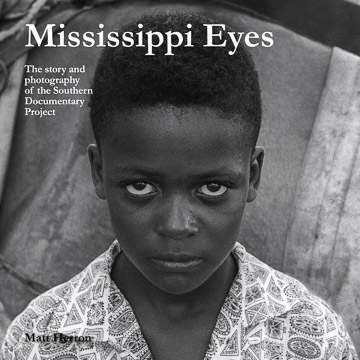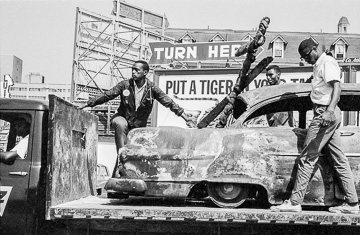
Mississippi Eyes
by Matt HerronMississippi Eyes
Lending their eyes to the cause of civil rights during the pivotal summer of 1964, a team of five young photographers attempted to document the process of social change as the segregated South both resisted and reluctantly yielded to forces brought to bear on it by civil rights organizations and the black citizens they served. Mississippi Eyes is a chronicle in words and pictures of the work of the Southern Documentary Project and the events and adventures its photographer encountered as the went about their difficult assignment.

KuKlux Klan Recruitment Poster
Their story begins in the winter mud of the Mississippi Delta and ends in Atlantic City's convention hall as Mississippi activists challenged the official Mississippi delegates to the national Democratic Convention. Along the way individual photographers were: beaten and nearly killed by a sheriff's posse in Selma, Alabama; received hospitably by the white mayor of a small Mississippi town; photographed a moving service in a sharecropper's church; documented remarkable encounters between Ivy League student teachers and black children in Freedom Schools; and followed the heartbreaking struggle of a young boy to confront the murder of his older brother by Klansmen.
The Southern Documentary Project was the brain child of Matt Herron, a budding photojournalist who had moved with his family to Mississippi in 1963 to work in civil rights and shoot stories for the major picture magazines. Drawing for advice and support on his friendship with the noted documentary photographer Dorothea Lange, Herron pulled together a shoestring budget, recruited photographers with civil rights experience, and completed the summer with a file of striking photographs. It was the first and only time a photo-documentary team had entered the field since the famed Farm Security Administration photo project of the 1930's and 1940's. Mississippi Eyes is also the only book to provide a first-hand account of what it was actually like to photograph for the cause of civil rights in the deep South.
Exerpts

Stokeley Carmichael's Firebombed Car
-
Those of us who trained our eyes (and our cameras) on Mississippi, had our eyes trained in turn by Mississippi. Our encounters with Mississippi taught us to look at this special place with eyes that were skeptical and questioning. What was said to us; what was seen by us was not always truthful or actual. And when we left this place, we carried our newly trained eyes with us. Thom that time onward, we looked at the world through Mississippi Eyes.
- Prince and DeMeuth headed out, pickup trucks following behind. DeMeuth was still bleeding. Remembering the Philadelphia murders where three civil rights workers were initially picked up for speeding, they decided to stay within legal limits, but Prince resolved that if any of the following vehicles got within two car lengths, he was going to floor it. In this fashion they drove the fifty two miles to Montgomery.
- Rule Number Two: Never stop moving. I learned that in a demonstration, or any situation with a potential for confrontation and violence it was important never to tarry too long in any one place. If some locals ( in or out of uniform) had a hankering to bust you up, it usually took them a few moments to find their resolve and get organized. By then you were elsewhere. Besides, in a fast moving situation, the best pictures were always to be found when one moved as fast as the action.
- A year and a half later, Dahmer's house and store were firebombed by Klansmen who shot at family members as they tried to escape. Dahmer returned fire from within the burning building, but was so severely burned himself during the defense that he died the next day. The bombing and Dahmer's death provoked outrage in both the white and black communities of Hattiesburg, where businesses, unions, and citizens worked together to rebuild the Dahmer home. Thirteen Klansmen were tried and some convicted of the crime, but Imperial Wizard Sam Bowers, who was believed to have ordered the attack, survived three mistrials. In 1988, he was retried and convicted on new evidence. He died in prison.